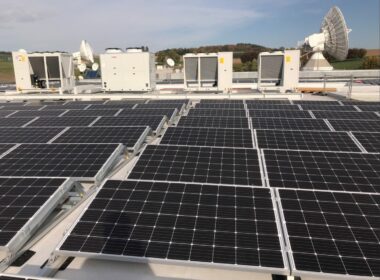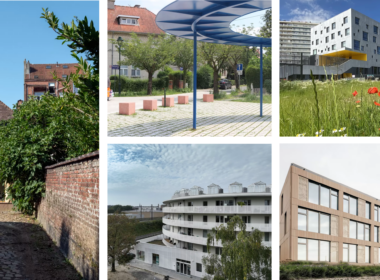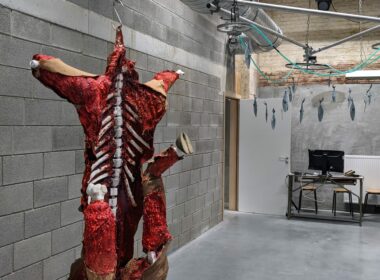The challenges of sustainable and circular construction in 2025 promise to be crucial. Faced with climate change concerns, sector professionals are stepping up their innovations to redesign their practices, integrating reuse, bio-sourced materials and digital solutions. Let’s take a look at the major trends that will shape this new year through the testimonies of our members – architects, engineers, developers, material suppliers and contractors.
Sustainable materials: Jérémy Boomer from Natura Mater analyses the trends
In 2025, sustainable construction practices will be redefined by three major trends, namely reuse, bio-sourced materials and the recovery of post-consumption waste.
Reuse, which is already well established in Brussels, will make further progress thanks to platforms such as Bazaar. These initiatives, supported by emblematic projects such as Usquare and The Arch, promote the large-scale integration of recycled elements such as bricks, joinery and metal structures. These examples show that it is possible to combine aesthetics, savings and a reduced ecological footprint.
Biosourced materials such as compressed straw and grass continue to make inroads. These innovative solutions offer a low carbon footprint and help to capture CO₂. Straw, once used only for rural buildings, is now becoming a popular material for contemporary projects, proving that sustainability and modernity can form a convincing alliance.
The recycling of post-consumer waste is increasing. Materials such as PVC, wood and glass can be put to new uses on construction sites after recycling. Derived from circular processes, these materials are becoming high-performance, responsible alternatives that meet the environmental and economic requirements of European regulations.
These innovations will allow the design of more resilient buildings that meet the expectations of professionals as well as ecological and economic imperatives, making 2025 a key year for a new kind of construction.
Rethinking urban planning: the approach of Simon Claeys, architect at B2ai
Renovation is the primary solution for sustainable, circular construction. Reusing existing buildings reduces the ecological impact while preserving precious resources. The adoption of flexible, adaptable structures is key to ensuring the longevity of buildings and their resilience in the face of future change.
Another key factor is the reallocation of offices for mixed uses. Given the under-utilisation of many office buildings due to remote working, these spaces can be converted into housing or integrated into multifunctional projects (residential, commercial, etc.), thus revitalising urban districts and optimising the use of space.
Revitalising districts means integrating multiple functions. Replacing single-functional design with multi-purpose projects creates more interactive, lively and resilient environments. It also helps improve the safety and well-being of residents, creating more connected and sustainable communities.
These three major trends reflect a collective desire to rethink urban planning in order to combine sustainability, flexibility and resilience in the face of future social and environmental challenges.
Green Deal, digitalisation and collaboration: entrepreneurial challenges according to Sophie Lefert, Valens-Eiffage
The European Green Deal continues to impact the sector, particularly in terms of renovation. Offering support to SMEs in implementing these environmental initiatives is a major challenge for the coming years. The energy transition and the reduction of CO₂ emissions will become absolute priorities for construction companies.
The industrialisation of construction processes is also changing rapidly and must continue its optimisation. The use of prefabricated and standardised elements allows better cost control, improved project profitability and better resource management. These techniques also guarantee better quality construction while making the work easier.
The construction sector cannot avoid digitalisation and artificial intelligence (AI). Data management and the digital transition are priorities for contractors in order, among other things, to standardise the different operations on site. Furthermore, artificial intelligence certainly promises to be disruptive and bring new changes to the sector.
Lastly, collaboration between the different players in the sector must move towards more cross-functional and integrated models. The traditional method of “linear collaboration” is giving way to projects in which stakeholders are involved from the very beginning, with a clearly defined common objective, thus reducing conflict and optimising project efficiency.
It is no longer a secret that the sector is facing a glaring labour shortage. However, construction jobs are changing and new digitisation-related jobs are emerging. Developing these new skills is crucial to attracting new talent.
Material simplicity and reuse: the role of engineering in more sustainable construction with Luc Sohier, Ney & Partners WOW
In 2025, sustainable construction will be based more than ever on two key principles, i.e. material simplicity and reuse.
It has become essential to reduce the environmental impact of structures by limiting the quantity of materials used. The use of biosourced, geosourced or reused materials is becoming the rule. Wood, the ultimate bio-sourced material, offers undeniable advantages, as it stores CO₂ and can be adapted to a wide variety of construction methods. At the same time, the reuse of materials, such as concrete from local demolition sites, helps to reduce ecological footprints while optimising the available resources. Architects and engineers have a crucial role to play here, in designing projects able to accommodate these materials while guaranteeing their structural integrity. Likewise, production off-cuts, such as those from CLT panels, can be recycled to optimise the use of this type of valuable resource.
The use of new concrete should be limited to situations in which there is no viable alternative. This approach is particularly crucial given that buildings account for between 20% and 25% of global CO₂ emissions, surpassing even those of the transport sector.
Limiting the use of materials with a significant environmental impact is therefore a major challenge in building a more sustainable future.
“CityDev: innovation, heating networks and reuse at the heart of projects”
Sustainability will remain a priority in 2025, even in a challenging economic context, with a need for budgetary control. As a public developer, it is essential to identify the key innovations for the Region’s development, systematising quick wins capable of generating concrete results in the short term.
It will be essential to integrate heating networks and local solutions, such as energy communities. Contributing to the decarbonisation of energy and reducing long-term costs must be a priority (e.g. BridgeCity and CityGate II).
Another priority is combating heat islands and optimising permeable surfaces to encourage water infiltration. These actions, which are essential for adapting to climate change, will also improve the quality of life and sustainability of these spaces.
It is essential to consistently incorporate reuse. It is also vital to pursue ambitious projects, including the reuse of structural elements and special techniques. As well as the reuse of less expensive basic materials, such as sanitary facilities and electrical accessories (e.g. Copernic, Stevin and Greenbizz II).
The flexibility and modularity of spaces become essential as users’ needs evolve.
Lastly, as Sophie Lefert said, a key issue in 2025 will be prefabrication and off-site construction. Working groups will soon be launched, in collaboration with Embuild and Buildwise, to explore the development of local Brussels circuits.
Discover the profile cards and contact details of the members who contributed to the writing of this article:





